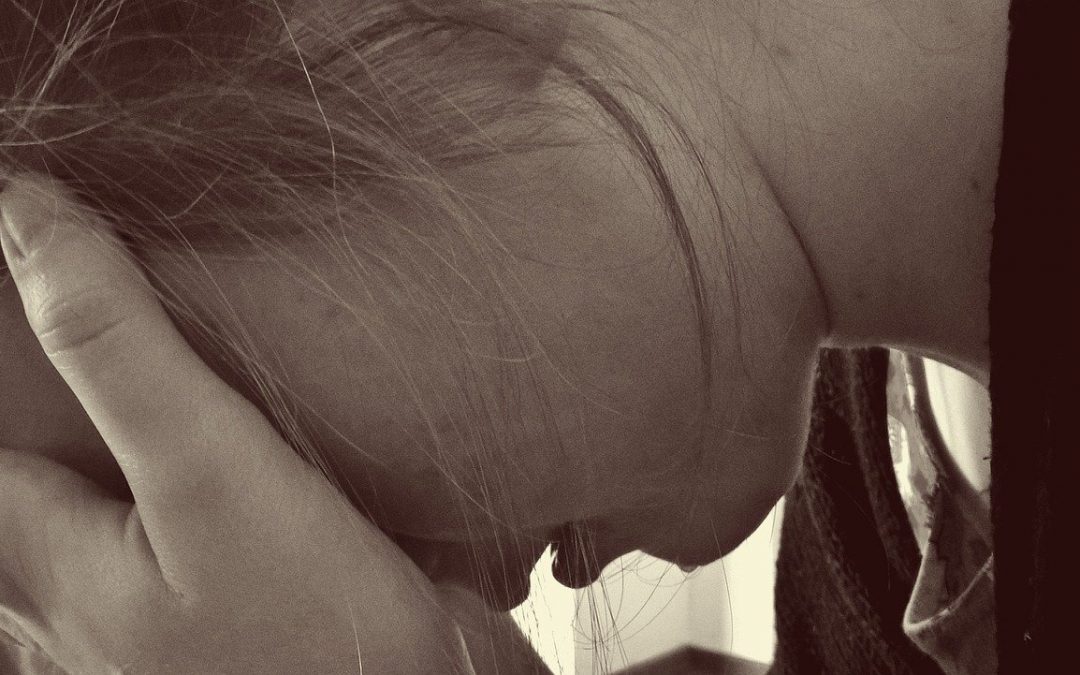***Trigger Warning This article contains information that may upset sensitive readers. The following article is about self-harming and should not be read by those who find this subject disturbing.***
Harming oneself is an all-too-common symptom of a larger mental health problem that can lead to dying prematurely by suicide if left untreated. Hurting one’s own body may seem extreme, but to those who do it, self-harm seems to be the only recourse they have.
In this article, we shall begin a series on self-harm and examine the signs that you or someone you care about are self-harming and what to do about it.
The Definition of Self-Harm

Self-harm, also known as self-injury, happens when a person becomes overwhelmed and deliberately hurts their own body. The injuries inflicted on oneself can be anywhere from minor cuts to severe injuries that are life-threatening.
There as many methods to self-harm as there are people who do it, but below are a few examples:
- Pulling out your hair
- Punching oneself
- Punching a wall to injure oneself
- Cutting oneself
- Bruising oneself
- Burning oneself
- Forcing oneself into extreme fasting
Not all people who self-harm have a mental health condition, nor is self-injury a mental disorder on its own. Many people who do self-harm, though, do have an underlying mental health condition. People who self-harm are not usually trying to die by suicide, but these behaviors can lead to a higher risk of suicide completion or death from self-injury complications.
As one scientist put it, “Self-harm has been defined as “a preoccupation with deliberately hurting oneself without conscious suicidal intent, often resulting in damage to body tissue” (Muelehkamp, 2005).
What are the Stats on Self-Harm?
Since there is an enormous stigma and shame surrounding self-harm, self-injury prevalence research is not entirely accurate. However, what the research has shown over the past decade is alarming.
One paper, published in 2018, offers the following statistics about self-harm worldwide.
- About 17% of all people will self-harm sometime in their lifetime
- The average age of the first time one self-harms is thirteen
- 45% of people use cutting as their method
- Approximately 50% of those who seek help for their self-injury behavior reach out to friends instead of a professional
- Self-harm behaviors are increasing (50% increase reported by ER visits by young females since 2009.
Clearly, self-harm is a subject that must be examined and talked about. Opening a dialogue about self-injury is the most powerful tool we have to end this tragedy.
Who Self-Injures?

You may think you know who self-harms, teenagers, right? Not necessarily. There are any demographics to consider when answering the question, who self-injures.
While anyone can self-harm, statistics point to specific populations who are at high-risk.
Women and Men. Women are more likely to self-harm than men, but males make up at least 35% of total self-harm cases. Indeed, men are less likely to self-report self-injury and report others harming them than women.
LGBTQ Communities. Gay and bisexual people are at a high risk of self-harm as nearly half of all bisexual females engage in self-injury.
Other Adults. Other adults are the least likely to self-injure, with only 5% having self-injured in their lifetime.
College Students. 15% of college students report self-harming themselves.
Teenagers. Adolescents have the most significant rate of self-harming behaviors, with 17% admitting they self-injure at least once.
Obviously, self-harm affects almost every demographic, including the elderly, who were not mentioned in the above studies. Elderly people are more likely to escalate self-harm to suicide rapidly and should not be ignored (Dennis et al., 2005).
Why Do Some People Hurt Themselves?

People who harm themselves offer several reasons they do so, and their answers often surround either current ongoing trauma or trauma experienced in the past. Coping and dealing with feelings and emotions that accompany the memories of trauma is a substantial contributing factor.
Some of the reasons some people self-harm may include:
- To end the numbness they feel inside
- To block upsetting memories of trauma
- To show others that they are in pain and need help
- To help and release intense emotions that make them feel overwhelmed
- To punish themselves
- To feel some sense of control over their lives
Typically beginning in the teen or early adult years, those at risk for self-injury are all ages and reach across all demographic lines. Self-harm more commonly affects those who:
- Were abused as children
- Went through a traumatic event as children (tornado, house fire, etc.)
- Lost a parent to either death or divorce
- Misuse drugs or alcohol
- Have friends who self-harm
- Have a low self-esteem
- Have a negative body image
There are many mental health disorders that can contribute to a person’s need to self-harm, including:
- Clinical depression
- Post-traumatic stress disorder
- Complex post-traumatic stress disorder
- Eating disorders
- Some kinds of personality disorders
- Borderline personality disorder
- Schizophrenia
- Bipolar disorder
- Dissociative identity disorder
(Briere & Gil, 1998)
The risk factors can cause a person to adopt self-harm as a learned coping behavior to help them compensate for the lack of adequate fulfillment of their desires and dreams for their lives.
Why Self-Harm?

If you are asking the question, why self-harm? You are not alone. Physicians, mental health professionals, and those who self-harm ask this question too. There are many reasons besides those listed above that people may harm themselves.
To feel better. Pain releases endorphins in the brain that releases pent-up feelings such as anxiety and anger.
To communicate the emotional pain they feel. People who self-harm may exhibit or display their wounds to gain the attention of others to get help.
To feel they are in control. Powerlessness (whether real or perceived) and low self-esteem are key contributing factors to self-harm. Feeling out of control of one’s life, such as having survived but are living with the after-effects of childhood sexual abuse. Other emotions that accompany powerlessness are self-loathing and the absence of powerful self-esteem (Hasking, 2010).
The Warning Signs That Someone is Self-Harming
While some people who self-harm take no precautions to hide what they are doing because they are crying for help, many others do not. Some who self-injure go to great lengths to hide their cuts, burns, and bruises.
Some warning signs can scream that someone is self-harming. These warning signs can also be applied to oneself to see if you are in danger of self-harming or are committing self-injury yourself.
- Are acting withdrawn
- Are quieter and reserved than before
- Experiencing rapid mood swings
- Get angry and upset easily
- Have poor academic performance after doing well
- Having had a significant traumatic event happen in life, such as the loss of a significant other
- Wear clothes that make no sense, such as long-sleeves in sweltering weather
- Makes excuses for cuts or bruises
(Hasking, 2010)
If you witness any of these warning signs in yourself or others, it is time to reach out for help.
How to Help Someone Who is Self-Harming

After realizing that someone is self-harming, what can you do? Should you accuse them of hurting themselves and try to make them feel ashamed?
Absolutely not.
Self-harm is the visible incarnation of deep pain that the person is having problems dealing with or expressing. If you accuse them of being weak or try to force them to quit, you will only drive them deeper and take their self-injuries underground.
If you’ve noticed suspicious injuries on someone you care about or they admit to you they are doing it, here are some recommendations that might help.
Be supportive. Although their actions make no sense to you, be supportive and tell them you care and are there for them.
Avoid judging them. If you judge your friend or loved one’s behaviors, you can drive them away or cause them to shut down altogether.
Do some research of your own. Being genuinely interested in understanding what drives self-harm and the reasons why people do it may help you. Remember, you are dealing with a highly stressful situation. Understanding the where, why, and how of self-injury can help your understanding of what you are dealing with and show your friend or loved one you are interested in helping them.
Try to be accepting. Self-harming is very isolating for those who do it. Accepting and obviously caring for the person who self-injures can make all the difference.
There is no reason at all for telling your friend or loved one that what they are doing is right because self-injury is harmful.
However, you can show by example how to cope with their fear differently, but you can only do this if you treat someone who self-harms as you would anyone else. Don’t act differently around them when unnecessary to do so to help normalize their life.
Words of Hope for The Ending of This Piece

No one needs to walk away from reading this article, feeling there is no hope for them or the ones they love. I want to leave you with these words of hope in the form of quotes that are uplifting and full of encouragement.
“Turn your wounds into wisdom.”
Oprah Winfrey
“We need to start treating ourselves how we deserve to be treated, even if you feel that no one else does. Prove to the world you ARE worth something by treating yourself with the utmost respect and hope that other people will follow your example. And even if they don’t, at least one person in the world is treating you well: YOU.” Carrie Hope Fletcher
“Out of suffering have emerged the strongest souls; the most massive characters are seared with scars.” Kahlil Gibran
“My scars remind me that I did indeed survive my deepest wounds. That in itself is an accomplishment. And they bring to mind something else, too. They remind me that the damage life has inflicted on me has, in many places, left me stronger and more resilient. What hurt me in the past has actually made me better equipped to face the present.” Steve Goodier
Please, always remember that no one is as precious as you are to this author. No one deserves more love, acceptance, and caring than you.
You can also count on CPTSD Foundation to always be there for you no matter what, anytime, any day. Just reach out, and we’ll answer quickly with as much empathy and information we can provide.
References
Briere, J. & Gil, E. (1998). Self-mutilation in clinical and general population samples: Prevalence, correlates and functions. American Journal of Orthopsychiatry, 68(4), 609-620.
Dennis, M., Wakefield, P., Molloy, C., Andrews, H., & Friedman, T. (2005). Self-harm in older people with depression: comparison of social factors, life events, and symptoms. The British Journal of Psychiatry, 186(6), 538-539.
Gillies, D., Christou, M. A., Dixon, A. C., Featherston, O. J., Rapti, I., Garcia-Anguita, A., & Christou, P. A. (2018). Prevalence and characteristics of self-harm in adolescents: meta-analyses of community-based studies 1990–2015. Journal of the American Academy of Child & Adolescent Psychiatry, 57(10), 733-741.
Hasking, M., et al. (2010). Seeking solutions to self-injury: A guide for young people. Brisbane, Australia: Centre for suicide prevention studies, The University of Queensland.
Muehlenkamp, J. (2005). Self-injurious behavior as a separate clinical syndrome. American Journal of Orthopsychiatry, 75(2), 324-333.

If you are a survivor or someone who loves a survivor and cannot find a therapist who treats complex post-traumatic stress disorder, please contact the CPTSD Foundation. We have a staff of volunteers who have been compiling a list of providers who treat CPTSD. They would be happy to give you more ideas about where to look and find a therapist to help you. Go to the contact us page and send us a note stating you need help, and our staff will respond quickly to your request.
Are you a therapist who treats CPTSD? Please, consider dropping us a line to add you to our growing list of providers. You would get aid in finding clients, and you would be helping someone find the peace they deserve. Go to the contact us page and send us a note, and our staff will respond quickly.
Shortly, CPTSD Foundation will have compiled a long list of providers who treat complex post-traumatic stress disorder. When it becomes available, we will be putting it on our website www.CPTSDFoundation.org.
Make sure to visit us and sign up for our weekly newsletter to help keep you informed on treatment options and much more for complex post-traumatic stress disorder.
If you or a loved one live in the despair and isolation that comes with complex post-traumatic stress disorder, please, come to us for help. CPTSD Foundation offers a wide range of services, including:
- Daily Calls
- The Healing Book Club
- Support Groups
- Our Blog
- The Trauma-Informed Newsletter
- Daily Encouragement Texts


My name is Shirley Davis and I am a freelance writer with over 40-years- experience writing short stories and poetry. Living as I do among the corn and bean fields of Illinois (USA), working from home using the Internet has become the best way to communicate with the world. My interests are wide and varied. I love any kind of science and read several research papers per week to satisfy my curiosity. I have earned an Associate Degree in Psychology and enjoy writing books on the subjects that most interest me.





Very important discussion. Unfortunately this occurs too often and is always a red flag warning. Medical literature is deficient!
This piece, which is primarily about self-harm, says little about complex ptsd. As such, I would not have included complex ptsd in the title of this report. The subject of complex ptsd, which is commonly lumped with ptsd, needs its own story. Thank you.
I’ve been self-harming since I was five years old. I’m 75 now and I still do it. The causes are obvious. My mother was, and my older brother still is, I suppose, psychopathic (or sociopathic or whatever else you people call it now), toxically narcissistic sadists (my mother was also a keen machiavellian). I was their favourite target and experienced trauma of one sort or another almost daily when I was growing up. I have a whole treasure-trove of CPTSD symptoms along with self-harm, but I of course didn’t know anything at all about CPTSD until I was in my 60s, after living a by-the-numbers CPTSD life.
Now that I’m 75 all those symptoms remain, but I can frequently remind myself that I couldn’t have a better old age survivorhood than here in Aotearoa/New Zealand, where I’ve lived since 1988, and which does make something of an effort to care for old people. Unlike the Old Country.
Autism and self injury is common, however no studies have been done on parents and long term caregivers dealing with self injurious behaviors, though studies show parents of autistic children have stress equal to combat soldiers. IF combat soldiers also show signs of stress than include self harm, then shouldn’t this be studied? And if so, isn’t the solution to this madness of endless research than often end with “more research needed” be to study the effects on all persons involved? And to include why there is so much stress? Specifically, the fact there are no known pharmacological treatments to help? And that each state in USA has failed to provide adequate ABA services and support staff to families and Emergency medical professionals tortured by this under the radar crisis? Wouldn’t it therefore be more reasonable to study WHY this is such a pervasive problem and identify the most prevalent reasons why this persists in the absence of proper supports ?